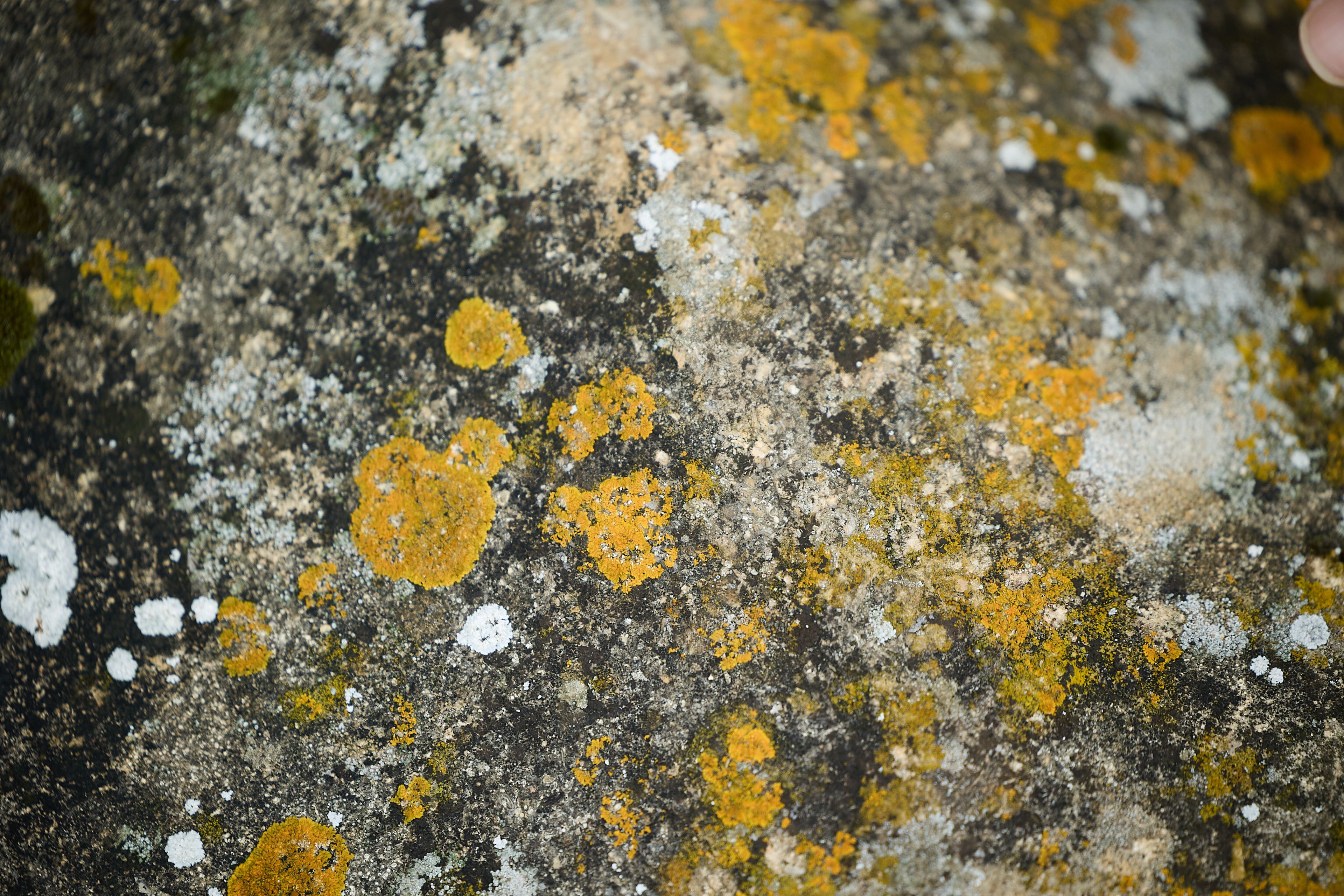The Blenheim-Oxford Partnership
Partnering on high-tech heritage restoration

Blenheim Palace and the University of Oxford are partnering on a data-led approach to restoring the three-hundred-year-old building.
Built to celebrate the Duke of Marlborough’s 1704 victory at the Battle of Blenheim, the eponymous Blenheim Palace in Oxfordshire requires a major programme of restoration work.
However, rather than just replacing individual stones that have failed, the Built Heritage Team at the Palace want to find out precisely why certain stones crack or flake, and others do not. To delve deeper into how the building performs, and so that it can prioritise where restoration budget is efficiently spent, the team has partnered with experts at the University of Oxford.

The Blenheim team normally spot failing stones during pre- and post-winter inspections of the Palace by specialist surveyors using rope-access. However, they can only assess the surface of the stone rather than the hidden causes of failure behind it. The team also uses binoculars throughout the year to scan walls and roof surfaces, for an indication of where problems may lie, yet they can only see a proportion of the vast building from the ground.
The Team suspects the reason why some stones fail, and other do not, lies in how they were laid three hundred years ago and in how subsequent restoration has been handled. They also believe that the way in which different aspects of the building are exposed to various climate factors - such as wind, rain and frost – could be playing a major role.

To replace working hypotheses with data-led insights, the Blenheim team is working in partnership with researchers from the University of Oxford. Part of this involves deploying a range of high-tech sensors that can probe beneath the surface and measure defects, moisture, temperature and vibration.
One focus is on finding out how much of the stonework is held together by iron cramps, as the expansion of the iron is believed to cause stone failure. University experts are also studying different types of lichen that abound on the buildings to determine whether they are a factor in progressing or preventing degradation of the stone.






Peering behind stones
Blenheim Palace is currently halfway through a ten-year £40m restoration programme. This forms the start of what is likely to be a 20-year £80m programme, depending on what is revealed by the current project with the University of Oxford.
A particular area of concern, and a focus for the University of Oxford work, is the iron cramps which act like a skeleton behind much of the structure of the Palace, pinning the stones together. The extent of the iron cramps is unknown, but is essential to find out because they contribute greatly to stone failure, according to the Palace’s Head of Built Heritage, Kelly Whitton.

'It seems that the worst affected areas are where there are wrought iron cramps inside the stones. These metal elements were there either as original components, or added through restoration, because there was an architectural fashion to have really thin joints between the stone blocks,' she says.

Kelly Whitton
Kelly Whitton
'With iron, as soon as you get water coming in, it leads to corrosion and rust, and then expansion of the metal elements which produces a force on the stone. That force can blow the surface of the stone away.'
This makes it essential to use equipment that can see through the stones to detect any iron, and to know which areas of the building are showing signs of water ingress. This knowledge can then be used to prioritise where renovation work is undertaken.


Lichen – villain or saint?
Another question the partnership hopes to answer is whether lichen found on the stonework has a preserving or degrading effect. Experts from the University are studying lichen growing on the stones to learn which species are present and whether they have different impacts on the stones they cover.

Dr Nick Carter, Lichenologist
Dr Nick Carter, Lichenologist
Heather Viles, Professor of Biogeomorphology and Heritage Conservation at the University of Oxford, is an expert in how stones and rocks degrade. She has brought in lichen specialists to work alongside her and the Palace team to answer what many researchers consider is a fundamental question in building preservation.

Professor Heather Viles
Professor Heather Viles
'Are lichens good or bad? Some people think they are deteriorative and there are examples of lichen species that are reasonably aggressive and can deteriorate stonework. There's a counter argument that says their net role is protective. Having a layer of organisms on the surface stops pollution, salts and rain getting to the underlying stone. We want to answer this question, and that requires us to know what lichens are growing on the walls because some are deteriorative, but some are probably protective.'
This greater understanding could help the Blenheim Palace team prioritise the removal of lichens deemed to be damaging while preserving areas where lichen is considered beneficial.


Predicting the future



The true potential of the partnership between the Palace and University can be seen when the current early exploration work is placed in a wider context. All the construction and lichen data being generated will be combined with archived restoration records, currently being catalogued and digitised by University of Oxford students working on short-term internships. By assimilating these data sets with weather records, the Blenheim team plans to build a 3D ‘digital twin’ of the Palace.
When all the datasets are combined, the team will know why some areas of the building are failing and which should be prioritised. By understanding the origin of each of the stones used, the presence of iron cramps, the impact of lichen, and the effects of weather exposure in different areas, the team will be able to prioritise renovation work more effectively, and predict where it is most likely to be needed in the future.
'The big picture is trying to predict failure in the building longer term,' says David Green, Head of Innovation at Blenheim Palace.
'First comes the classification of the material and what lies behind it. Then, identifying the weather patterns that led up to the failure. For example, was it raining, then frosty? This is where collecting the datasets comes in. Through tying this into when the stones fail, we're building datasets where AI and machine learning will be able to really add value. If we don't do this groundwork now, it will be very difficult to predict anything in the future.'
This complexity of understanding the building better, collecting data about how it has been constructed and renovated, alongside identifying weather patterns, led the Blenheim team to seek expertise from the University of Oxford.
'We’re being ground-breaking in our approach and knew we had to partner with the University of Oxford on this,' adds Green.

David Green
David Green
'You've got the best of the best with the University of Oxford, and to be able to blend their expertise into our real-world challenging environment is really powerful. We get access to their network of people that just help us to get the job done. We have an open door to all this specialist knowledge, working with some brilliant academics. It’s very exciting for us.'
The sentiment is shared by Professor Viles who believes that not only is the partnership breaking new ground by developing innovative systems to prioritise renovation at Blenheim, but it is also creating a model that could be scaled to other properties.
'The initial pilots we’re running might look quite disparate now, but they're going to provide evidence to come up with a proof of concept for what kind of intelligent system we need to link the data together for a 3D model of the Palace.' she says.
'That will allow us to see, for example, that an area is wet but was repointed in the 1970s. We are then able assess it as being less of a risk than an area which is a little less wet but hasn’t been touched in more than 200 years. There are a lot of limestone buildings out there so this model we’re building is something that’s going to be scalable to other buildings.'


'Jackpot' learning opportunity
In addition to laying the groundwork for a better understanding of how the Palace is performing, the partnership is also providing an extra dimension to Blenheim’s training programme. Aimee Akinola is Blenheim’s Built Heritage Apprentice, and is halfway through a Level 4 apprenticeship she started after completing a Master’s degree in architecture.
She has been observing and learning about the project management aspects of the partnership, which she describes it as 'hitting the jackpot'. This is because she not only gets access to the Palace’s own team but is also given hands-on experience of working with University experts across all the projects.
'It's a unique experience in terms of the people I interact with, and the day-to-day-insights into the projects that I’m learning from. I wouldn't be getting this anywhere else.'
'In addition to what I’m learning from Blenheim colleagues, I'd say discipline is the biggest thing I’m picking up from visiting academics and students. The Palace is vast and it’s easy to get side-tracked, but they always come to Blenheim with a plan of deliverables they’re going to achieve each day. The partnership has helped me realise that this focus, this structure to each day, is vital in project management.'

Aimee is also involved in a team at Blenheim Palace who are re-imagining signage. This signage usually apologises to guests for ongoing repair work so, instead, they are exploring how the renovation projects could lead to the creation of a curated experience, using information boards and pictures to explain the work taking place, and why. The tiny lichens found on stones across the Palace could also take centre stage with an exhibition exploring how these tiny life forms impact the resilience of the building.
Rather than be hidden behind scaffolding, the renovation partnership between Blenheim Palace and the University of Oxford looks set to play a key role in visitor education; helping the public understand the vital restoration work taking place to ensure the buildings and grounds can be enjoyed for generations to come.

Inspired by our innovators?
Get in touch with collaboration@admin.ox.ac.uk or visit https://www.ox.ac.uk/research/engage-with-us to see how we could help you make a difference.


